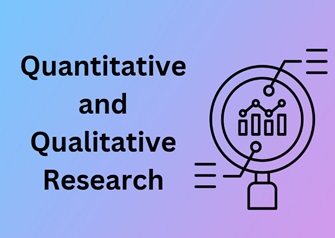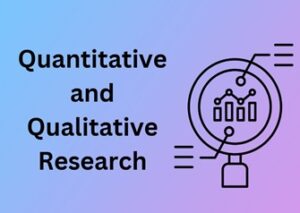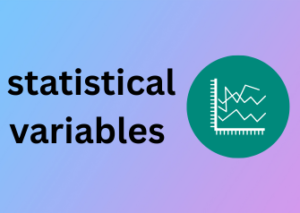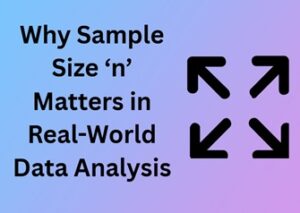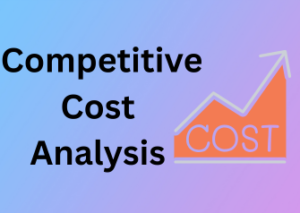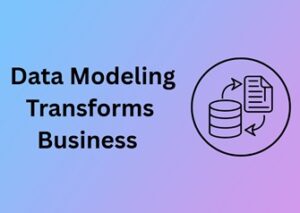Let’s uncover the magic behind numbers in business and why they’re key to making great decisions. Think about it—every time you check sales figures, review customer ratings, or even glance at growth percentages, you’re using numbers to guide a decision. Numbers aren’t just mundane; they’re the backbone of a flourishing, data-driven business strategy.
But let’s be honest looking at raw data can feel overwhelming! All those rows and columns or graphs with upward and downward trends… they can sometimes make you want to close your laptop and take a nap. So, how can we approach numbers without fear? By embracing their logic and learning the basics of their story.
Why Understanding Numbers Matters
Imagine running a business blindfolded. Without a clear grasp of data, that’s essentially what you’re doing. Numbers help you uncover patterns, measure progress, and highlight areas that need your attention. They answer questions like:
- What’s working? Maybe a new product you launched is flying off the shelves, and the sales figures prove it.
- What needs fixing? Low customer retention rates might reveal there’s an issue with service quality or user experience.
- Where should we go next? Projections based on past data can help guide future decisions—or even inspire new ideas entirely!
The bottom line: Understanding numbers empowers informed decision-making, not guesswork.
1. Key Numbers Every Business Leader Should Know
Now, I’m not saying you need to master advanced calculus or statistical modeling overnight, but there are a few fundamental figures every business owner or manager should routinely be tracking:
- Revenue & Profit Margins: How much are you earning and, more importantly, how much are you keeping?
- Customer Acquisition Cost (CAC): How much are you spending to bring in new customers? This tells you if your marketing is cost-effective.
- Customer Lifetime Value (CLV): How much revenue does the average customer bring over their lifetime of doing business with you?
- Employee Productivity: Numbers can also help refine internal operations and maximize efficiency.
Understanding these figures isn’t about micromanaging; it’s about streamlining your focus. With these digits in hand, you’ll know where your business stands at any moment.

2. A Pro Tip: Learn to Tell the Story Behind the Numbers
Numbers don’t just exist to sit in a report. They tell a story about challenges, triumphs, and opportunities. Your role as a modern business leader is to read and interpret that story effectively.
For example, if your sales doubled last quarter, don’t just celebrate (although, yes, go ahead and pop some champagne ). Ask questions to uncover the why behind the success: Was it a marketing campaign? A seasonal surge? A new product launch? Understanding the context gives your numbers meaning and helps replicate success.
3. The Numbers Game is Easier with Tools
If Excel formulas make you sweat, don’t worry technology has your back. There are tons of tools out there that simplify analytics and make tracking business numbers a breeze. Platforms like Tableau, Google Analytics, or even built-in metrics in Shopify or HubSpot can do the heavy lifting for you. You don’t have to be a math genius; you just need the right tools.
From Surveys to Stats: Practical Techniques for Real-World Insights
Let’s face it making decisions in business today without solid data to back them up is like flying blind. Luckily, surveys and statistics exist to give us a clear view of what’s really happening under the surface. But how do you go from asking questions to getting actionable insights that drive business success? Let’s break it down together!
Step One: Ask the Right Questions
Every great survey starts with clarity on what you want to achieve. Are you gauging customer satisfaction? Understanding employee engagement? Identifying market trends? Without a clear purpose, even the most well-drafted survey questions will fall flat.
Here’s a tip: Keep your questions clear, specific, and relevant. Open-ended questions can work wonders when you want qualitative feedback, but don’t overuse them! Balance them with multiple-choice or scale-based options that are easier to analyze.
- Example of a clear question: “How satisfied are you with the speed of our service?”
- Example of a fuzzy question: “What did you think about us?”
Step Two: Collect Data Effectively
Surveys are awesome tools, but their effectiveness depends on how they’re distributed. Is your audience more likely to respond via email, mobile apps, or old-fashioned in-store feedback? Meet them where they are, and make it easy for them to participate.
Oh, and don’t forget to keep surveys short. A 10-minute survey is the sweet spot—any longer, and participants may drop out or respond half-heartedly.
Step Three: Analyze Like a Pro
Once your data starts rolling in, it’s time to dive into the numbers. Here’s where statistics come into play. You don’t have to be a math genius to get valuable insights you just need the right tools and techniques.
- Start with descriptive stats: Mean, median, standard deviation. These help summarize your data.
- Use segmentation to hone in: Slice your data by demographic or behavior to spot trends.
- Consider visualizations: Charts and graphs can make patterns leap off the page. A pie chart can reveal favorite product categories, while a bar graph might show preferences split by age.
Tools like Excel, Google Sheets, or survey platforms like Qualtrics can make data analysis more approachable. Think of them as your trusty teammates in the analytic process!
Step Four: Turn Data into Stories
Now comes the fun part pulling out the insights that can guide real-world decisions. Numbers are just numbers until they’re translated into a narrative. Start by answering these questions:
- What trends stand out in the data?
- How does this compare to what you expected or past results?
- What actions can we take based on these findings?
For example, if survey responses tell you customers love your speedy delivery, but a segment gripes about packaging waste, the action becomes clear: Improve your packaging efficiency while maintaining delivery times.
Bridging the Gap: Combining Traditional and Modern Research Approaches
In the world of business research today, the choice isn’t just about whether to stick with tried-and-true traditional methods or embrace modern data-driven techniques. The key to staying ahead lies in skillfully combining both approaches to get the best of every world. Think of it as blending the reliability of the past with the innovation of the present a fusion that drives deeper, actionable insights.

Why Both Methods Matter
Traditional research approaches, like focus groups, in-depth interviews, and manual case studies, bring a depth of understanding that modern methods often struggle to replicate. These tools dig into the “why” behind behaviors and decisions, uncovering qualitative insights that numbers alone can’t fully articulate. On the other hand, modern methods such as big data analytics, machine learning, and predictive modeling provide precision and scale. They handle vast amounts of data in ways traditional tools never could.
So, why choose one over the other when you can leverage both? Combining these methods ensures that your research isn’t just broad—but rich. It’s about moving away from either-or thinking and using each method where it shines best.
Where Traditional Approaches Excel
Traditional methods are indispensable when context and nuance are critical. For example:
- Focus groups: These provide real-time insights into customer emotions, preferences, and thought processes. They help humanize your data.
- Qualitative interviews: One-on-one discussions can reveal motivations or pain points that people may not voice in surveys or digital interactions.
- Observational studies: Watching how customers interact with products or services paints a raw, unfiltered picture of their experiences.
These approaches are all about depth and intuition, digging into the “why” behind the numbers.
Where Modern Tools Take the Lead
Now let’s chat about where modern research steps in and flexes its muscle. These methods focus on speed, accuracy, and volume perfect for navigating the big data era we live in. Examples include:
- Analytics dashboards: Platforms analyze real-time data, revealing patterns and trends faster than any human could.
- Predictive modeling: Using historical data, predictive tools can forecast future outcomes with surprisingly high accuracy. This is especially valuable in areas like sales forecasting or market trend estimation.
- Social media monitoring: This method lets you tap into immediate visibility about customer sentiments or emerging market trends through platforms like Twitter or Instagram.
The impressive thing about modern tools is the sheer scalability you don’t just process some of the data; you process it all.
Achieving Harmony: Making It Work Together
So, how do you bring these two approaches together? The answer lies in asking yourself the right questions for each method. Start with traditional techniques to build a strong understanding of nuanced customer needs or behaviors. From there, use modern tools to quantify and validate those insights across a larger audience. For instance:
- Run a focus group to explore how customers feel about a new product. Listen closely to their feedback to pick up on emotional responses.
- Use sentiment analysis tools to scan thousands of online reviews and comments, validating whether the emotions expressed in the focus group align with wider market opinions.
It’s not about replacing one with the other but amplifying each side’s strengths for a more holistic picture.
Tips for Success
- Be strategic: Choose your methodology based on the question at hand. Qualitative for “why,” quantitative for “how much.”
- Invest in training: Ensure your team understands both worlds. Cross-functional collaboration is what will make these methods work in harmony.
- Keep iterating: Research is not a one-and-done deal. Use both approaches in tandem as your business or market evolves.
Making Sense of Metrics: Choosing the Right Analytical Tools
In today’s business landscape, where decisions often live or die by numbers, understanding which analytical tools to use can feel like an overwhelming task. With an explosion of options out there, from complex software to straightforward Excel functions, how do you choose the right one? Let’s break it down — because making sense of metrics doesn’t have to be complicated.
First, let’s consider a guiding principle: different goals demand different tools. Whether you’re tracking performance, forecasting trends, or measuring customer behavior, clarity on your objective is half the battle won. Once you know the destination, it becomes much easier to pick the right analytical “vehicle.”

Think About What You’re Measuring
Analytical tools come in all shapes and sizes, each with unique strengths. Here’s where the magic starts: ask yourself, What am I analyzing? For example:
- Descriptive Analytics: Are you looking to summarize what’s already happened? Tools like Excel or Google Sheets with simple data tables, pivot charts, and graphs can do wonders.
- Predictive Analytics: Want to predict future trends? Consider advanced software like Tableau, Python, or R for deeper statistical models and machine learning insights.
- Diagnostic Analytics: Trying to understand the “why” behind what happened? Tools like Microsoft Power BI allow for layering data and exploring root causes in detail.
Simplicity versus Complexity: Keep It Practical
While it may feel tempting to dive into the flashiest, most intricate tool, the truth is simplicity wins most of the time. A slick dashboard with fancy visuals is no help if your team struggles to interpret it. Accessible tools like Google Analytics for website traffic or Excel for sales data often cover 80% of business insights without the need for massive additional investment.
Looking for Customization? Explore Specialized Software
Every business has its quirks. If you’re dealing with data unique to your sector, explore specialized options tailored to your needs. For instance:
- Marketing? Google Data Studio and HubSpot analytics help track campaigns and measure ROI.
- Finance? Tools like QuickBooks or SAP allow for in-depth financial modeling and reporting.
- E-commerce? Consider platforms like Shopify Analytics for inventory, sales, and customer behavior metrics.
Breaking Down Bias: Ensuring Data Reliability and Integrity
Ah, bias—a word we hear a lot, but do we really understand just how it creeps into data and research? In the realm of business and quantitative methods, breaking down bias isn’t just a good practice; it’s an absolute necessity. After all, if your data is skewed or unreliable, how can you trust your results? Let’s dive into the heart of this issue and uncover how we can ensure reliability and integrity in every step of our analysis.
Why Bias Matters
Imagine making a business decision based on flawed data. It’s like trying to build a skyscraper on a shaky foundation—disastrous. Bias can distort your understanding, leading to incorrect conclusions and costly mistakes. The good news? Identifying and mitigating bias is possible if you approach it with intention and the right tools. Let’s explore why this matters so much.
Bias in research can sneak in from almost anywhere: your methodology, the way questions are phrased, sampling techniques, or even unconscious assumptions. It’s subtle, but the consequences can ripple through entire business strategies.
Spotting and Fixing Bias in Business Research
So, how do you spot bias in your data or research process? The first step is awareness. Below, I’ll walk you through key areas where bias commonly emerges and how you can tackle them proactively:
- Sampling Bias: Are you surveying or collecting data from a representative group? For example, if you’re trying to understand customer satisfaction but only capture the opinions of high-value customers, your findings won’t reflect the reality of the entire customer base.
- Confirmation Bias: Are you (perhaps unknowingly) seeking information that confirms your existing beliefs? Approach data analysis with a neutral mindset to ensure your conclusions aren’t just the answers you were hoping to find.
- Question Design: Ever read a survey question that nudged you toward a particular answer? That’s question design bias at work. Carefully word questions to remain neutral and open-ended when seeking reliable inputs.
- Cultural or Systematic Bias: Are there cultural assumptions influencing how data is interpreted? Business thrives on diversity so should your data collection process. Seek multiple perspectives, especially in global or cross-cultural research.
Practical Steps: Building a Bias-Free Research Process
To ensure your data is as unbiased as possible, consider the following tips:
- Start with a Clear Plan: Define your research objectives before diving in. A structured approach leaves less room for inconsistent results.
- Randomize When Appropriate: Random sampling can help you avoid selection bias, ensuring you’re collecting input from all corners of your audience.
- Assess Your Tools: Are your analytics tools designed for transparency? Algorithms can have biases too choose models and tools vetted for fairness.
- Peer Reviews and Second Opinions: A fresh set of eyes can help uncover blind spots you might not notice, especially in complex datasets.
Predicting Success: Applying Quantitative Methods for Business Growth
Imagine being able to take the guesswork out of business decisions. Sounds like a superpower, doesn’t it? Well, that’s exactly what using quantitative methods can feel like when you know how to use them effectively. Predicting success is about more than just crunching numbers; it’s about leveraging the right tools to unveil trends, forecast outcomes, and use data as your north star for business growth. Let’s explore how these methods can revolutionize your approach to success!
Why Predicting Success Matters
Predicting the future might sound like magic, but in business, it often comes down to strategic planning supported by data. Quantitative methods allow you to peer into trends, analyze patterns, and foresee potential challenges and opportunities. The result? Smarter decisions, stronger strategies, and a competitive edge in today’s fast-paced market. Whether it’s projecting customer demand, estimating revenue growth, or planning resource allocation, prediction is the heartbeat of modern business.
Key Tools to Help You Stay Ahead
The exciting part of applying quantitative methods is the wide variety of tools and techniques available. Here are just a few of the methods that businesses use to stay ahead:
- Regression Analysis: If you want to understand the relationship between variables (like how marketing spend influences sales), this is your go-to. It’s a powerful tool to uncover cause-and-effect dynamics.
- Time Series Forecasting: Ever wish you could predict future sales for the next quarter or year? Time series forecasting studies past trends to make accurate predictions moving forward.
- Scenario Analysis: This is like a “choose your adventure” for business planning. You can simulate different hypothetical situations—best case, worst case, and everything in-between—so you’re ready for any outcome.
- Data Visualization: While technically not prediction in itself, turning data into accessible charts, graphs, and dashboards can reveal trends and patterns more clearly, making it easier to plan for growth.
When used properly, these methods transform raw numbers into actionable insights, empowering you to create strategies that aren’t just bold but also grounded in evidence.
Getting Buy-in from Your Team
For these methods to drive growth effectively, everyone in your team needs to understand their value. Communicate using plain language, not jargon, when explaining how you’re applying quantitative analysis to reach shared business goals. Try framing it like this: “This model shows how allocating 20% more resources to marketing could improve revenue by 15%.” Clear, simple, and impactful!
Tips for Effective Implementation
So, how do you apply these techniques seamlessly in your organization? Here’s a quick roadmap for integrating quantitative methods into your business strategy:
- Start Small: Don’t try to predict every possible outcome at once. Focus on a single key metric or goal and build your expertise step by step.
- Invest in Training: Equip your team with workshops or online courses so they can understand and contribute to the data-driven strategies you’re implementing.
- Leverage Technology: Tools like Excel, R, Python, and specialized analytics platforms can make quantitative methods manageable and time-efficient.
- Measure and Adjust: Always follow up on predicted outcomes versus actual results and recalibrate as necessary. Prediction is about refinement, not perfection.
Case Studies: Lessons from Top Performers in Data-Driven Strategies
Tired of abstract theories about numbers and stats? Let’s dive into the real world, where businesses tackle challenges head-on and use data to tip the odds in their favor. Case studies are a treasure trove of inspiration and wisdom, showing just what’s possible when companies harness the power of data-driven strategies. So, grab a coffee and let’s explore what the top players are doing right — and how you can learn from them!
What Makes a “Top Performer” in Data-Driven Strategies?
Before we dive into specifics, let’s define what we mean by “top performer.” These are companies that not only collect vast amounts of data but use it effectively to make informed decisions. They stay adaptable, innovate with precision, and most importantly, they achieve tangible results. Think about businesses like Amazon, Netflix, or Tesla pioneers in leveraging data for product recommendations, customer experiences, and smarter operational strategies.
The secret? It’s not just about having the numbers but knowing how to connect the dots.
Breaking Down the Lessons
Here are some killer insights from data-savvy companies that are leading the way. Keep these lessons in mind as you build or refine your own strategies:
1. Amazon: Mastering Customer Insight
Amazon’s obsession with customer satisfaction isn’t just a slogan it’s baked into their analytics. They meticulously track buying patterns, search behaviors, and even browsing history. Their personalized recommendation engine, fueled by analyzing millions of data points, generates a solid chunk of their revenue.
2. Netflix: Data-Driven Creativity
Ever wondered how Netflix always seems to “get you” with its show recommendations? It’s no accident. Netflix analyzes viewing habits, favorite genres, and even when people hit pause and stop watching. Digging into this data helps them not only recommend shows but also decide what original content to create next.
3. Tesla: Innovation with Precision
Tesla uses data at every level of their operation, from design to customer feedback. For example, every Tesla car is essentially a feedback-generating machine, tracking performance and sending data back to the company. This constant flow of information helps Tesla improve their products with lightning speed.

